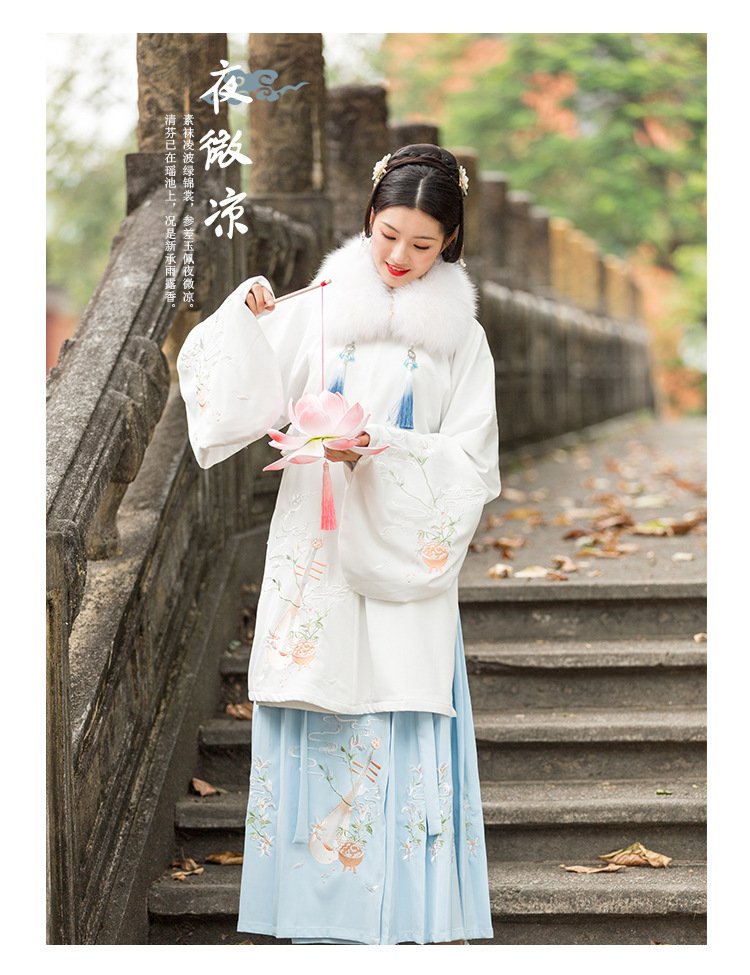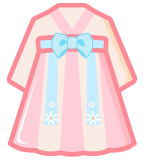Let’s cut to the chase: if you walk up to a Chinese friend and ask “What’s your traditional outfit called?” you’ll probably hear three quick answers—hanfu, qípáo, and tángzhuāng.
But those are just the opening words of a much longer, juicier story. Below is the same story, told the way your best friend would over bubble tea: no jargon, no museum labels, just straight talk and fun facts you can actually repeat at a party.
1. Hanfu – the “OG” Look
- Say it: hahn-foo (like “hot” without the t, plus “food” without the d).
- What it is: the grand-daddy of Chinese dress. Imagine a loose, flowy top that crosses left-over-right, plus a long skirt or wide pants. Everything is held together by a big cloth belt that doubles as a fanny-pack for jade, perfume pouches, even tiny scissors.
- Fun fact: Hanfu literally means “Han-people clothes.” It was worn for 3 000-plus years, then vanished from daily life after 1644 when a new dynasty (the Qing) said “everyone must dress like us.”
- Today: scroll TikTok in China and you’ll see Gen-Z kids rocking hanfu on the subway, at Starbucks, even at karaoke. They call it “wearing history to class.”

2. Qipao / Cheongsam – the Curve-Hugger
- Say it: chee-pow (qípáo) or chong-sahm (Cantonese “cheongsam”).
- What it is: the tight, high-collar dress with side slits you saw in In the Mood for Love. It started loose and Manchu in the 1600s, got Shanghai-fied in the 1920s (hello, silk + spandex), and became the go-to dress for “I’m elegant but I can still hail a taxi.”
- Fun fact: the slits aren’t just for legs—they were originally for riding horses. Practicality turned sexy.
- Today: wedding? Gala? Fancy dinner? A red qipao still screams “I’m celebrating, bring me champagne.”
3. Tang Suit – the Grandpa Jacket That Partys
- Say it: tahng zhwahng.
- What it is: a short, stand-up-collar jacket with knotted buttons that look like little ropes. Despite the name, it’s not from the Tang dynasty; it’s Qing-era menswear that got a 21st-century makeover. Think of it as the Chinese version of a tuxedo blazer—wear it over jeans and you instantly look like you own a tech start-up and a tea plantation.
- Fun fact: world leaders sometimes receive one as a gift at APEC meetings; they call it the “APEC jacket.”
4. Color Code – the Mood Ring Rule
- Red = happiness, weddings,红包 money.
- Yellow / gold = emperors, “don’t even think about it” level of status.
- White = mourning (not Western bridal).
- Black = serious boss energy or funerals—context is everything.
5. Prints & Embroidery – Memes Before Memes
Dragons = emperor power.
Phoenixes = queen energy.
Cranes = “I plan to live forever, thanks.”
Fish = surplus cash (word-play: yú sounds like “left-over” money).
Wear them wrong and grandmas will side-eye you at the reunion dinner.
6. Ethnic Remix – More Flavors Than Hot-Pot
China has 55 minority groups, each with its own drip.
- Tibetans: thick wool robes that double as blankets on the freezing plateau.
- Miao ladies: 15 kg of silver jewelry clinking like a human wind-chime.
- Uyghurs: bright silk dresses with Central Asian pop-art prints.
All of it counts as “traditional Chinese clothing,” so the answer keeps expanding.
7. Fast-Forward to Now
- Hanfu clubs meet up in parks on weekends; if you show up in jeans they’ll loan you a set and snap 200 photos.
- Wedding packages often include a hanfu pre-shoot, a qipao reception, and a Western gown after-party—one bride, three eras.
- Streetwear brands drop hoodies with hanfu sleeves; sneaker collabs feature cloud and dragon embroidery. History, but make it hype.
TL;DR – the Cheat Sheet
Ask “What is traditional Chinese clothing called?”
Answer:
“Mostly hanfu (the flowy ancient look), qipao (the sexy dress), and tang suit (the cool grandpa jacket). But honestly, it’s a whole wardrobe that’s 4 000 years deep and still getting new drops.”

